Art & Exhibitions
Why Are Children Having Such a Bad Time in Today’s Art?
Discover why contemporary artworks featuring children enact horror film tropes.
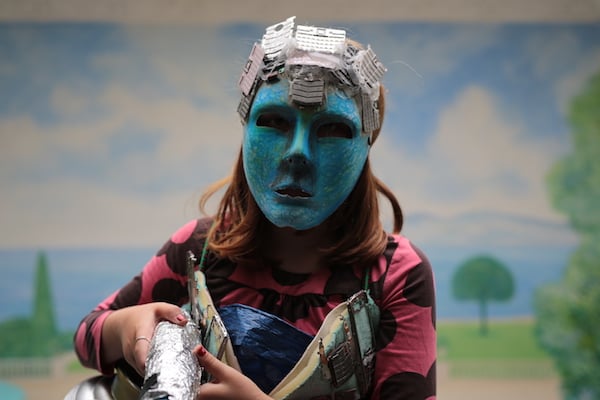
Photo: Tim Bowditch
Discover why contemporary artworks featuring children enact horror film tropes.

Hettie Judah

Children are having a bad time of it in today’s art. Abandoned, drilled, exploited, rendered hauntingly blank, or engorged with sapid youthiness ready for the tasting, their burgeoning presence in galleries, museums, and art fairs is, by turns, cautionary and disturbing.
Silently touring the corridors of Frieze London this year, Tunga’s Xifópagas Capilares (Siamese Hair Twins, 1984) were much “liked” at the Instagram-friendly fair. The two prepubescent girls in prim white dresses and little white shoes conjoined by a great dangling lip of hair stimulated profuse online comment, which focused on their “creepy” or “freaky” qualities. Despite the vast hairpiece that framed their clasped hands from behind as they walked, like an aged and matted reprimand to innocence, much of this response to the work arose from its accordance with horror movie conventions of the 1970s. Silent, self-absorbed twin girls in somewhat outdated garb, they harked back to the Omen/Exorcist/Carrie era in which demonic possession was a gore-laden metaphor for the onset of adolescence.
https://instagram.com/p/81duCqozhl/
Of course, Xifópagas Capilares is a work from the early 1980s, but its revival is in step with a return to the figure of the blank/unreadable child, both in horror movies such as Insidious (2011), and artworks such as Tino Sehgal’s Ann Lee (also 2011). Ann Lee, a “live action” animation of the manga character purchased by Pierre Huyghe and Philippe Parreno, caused a similar sensation to the hair twins when it was performed at Frieze New York in 2013, though there the unreadable prepubescent actors engaged in enigmatic scripted dialogue with visitors (“What is the relation between sign and melancholia?”). Disquieting because it felt tragic, perhaps, rather than otherworldly, Ann Lee still took much of its impact from the disconcerting deployment of children and the emotional response they provoke.
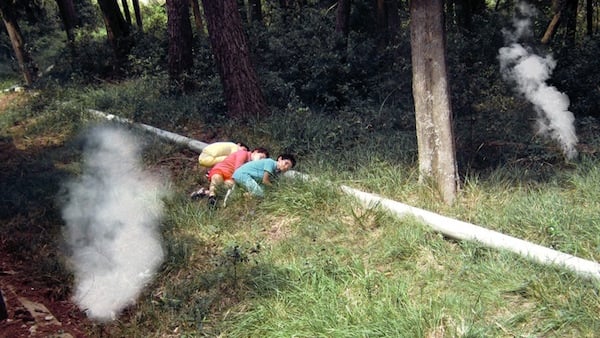
Mikhail Karikis, still from Children of Unquiet (2014).
Photo: Courtesy of the artist.
Mikhail Karikis’s Children of Unquiet (2013–14), currently showing as part of British Art Show 8, shares the uncanny retro quality of the Tunga work. Here, wise children occupy a world without adults, sheltered and perhaps even nurtured (or farmed) by old-fashioned industrial infrastructure and the “common wealth” of a geothermal power supply. Shot in the Devils Valley of Lardarello, Italy, the film drifts elegantly through the vast disused spaces of an old power station, accompanied by an evocative machinic soundscape composed and sung by local children. Dressed in brightly coloured monochrome outfits, these children are later pictured playing jump rope in the nearby abandoned village or kicking beach balls around the smoking gravel pits before resting with their cheeks on one of the factory pipes. Crouched earnestly in groups, they read to one another from Michael Hardt and Antonio Negri’s Commonwealth (2011). In the absence of adults they translate the materials of adulthood into the stuff of sombre play.
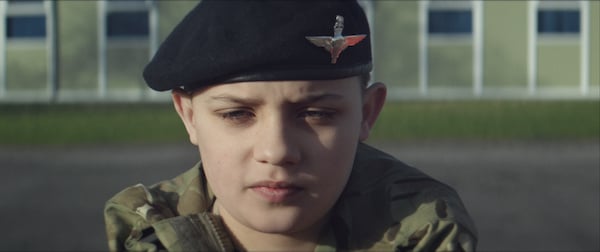
Broomberg and Chanarin, still from Rudiments (2015).
Photo: Courtesy Lisson Gallery.
Currently showing at Lisson Gallery in London, Adam Broomberg and Oliver Chanarin’s Rudiments (2015, and named, at a guess, after the classic snare drum manual by Buddy Rich) captures the tension between the “adult” discipline being drilled into a group of adolescent army cadets and the “childish” disruptive behaviour of an adult buffon: a base, anarchic clown delighting in socially unacceptable behaviour and fascinated with bodily functions. The rudimentary pre-school behaviour of the buffon is exactly that: human behaviour unschooled, undisciplined, unformed by social codes. The disciplining of the cadets, represented by an even, martial drumbeat played live on a snare in an adjacent gallery, is, by contrast, the most extreme form of drilled behaviour, a level of conformity and obedience exceeding the adult norm. The darker implication of the cadets’ discipline emerges as the uniformed children are invited to “die” for the camera, which they do with pantomimic flourish. A shot of the marching group through a glass window on which the words “Do Not Use” are smudgily visible is likewise a sideways hint of the adult world of war in which these children may be called to serve.
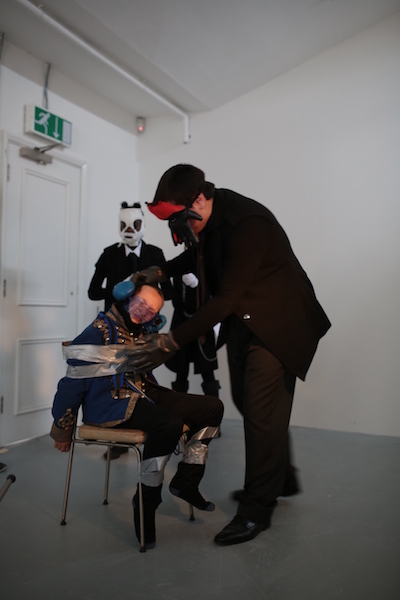
Jon Rafman and Daniel Lopatin, production still from Sticky Drama (2015).
Photo: Tim Bowditch
Peter Pan’s notion of death as “an awfully big adventure” today powers a multi billion dollar gaming industry. No doubt, the rosy-cheeked cadets of Rudiments have indulged in the endless menu of delightful adventures available en route to death online. This virtual theatre of combat is in turn presented as live action role play in Jon Rafman’s Sticky Drama (2015), commissioned by the Zabludowicz Collection. Dressed in scrappy costumes, a group of children is filmed engaged in fantastical battle and making gnomic or portentous pronouncements before copping it gruesomely (and stickily) in the gardens of a grand house.
As with the Karikis work, Sticky Drama shows a post-grownup world where children repurpose adult structures and technologies, but the hostilities of Rafman’s film are a familiar part of the contemporary childhood experience, albeit experienced via computer game. Sticky Drama is a jarring visual reminder that the tooled-up beefcake gunning you down in Call of Duty may well be the same twelve-year old pictured here dying encrusted in ketchup and wearing cardboard armour. Games and fantasy, once the stuff of childhood, are now shared territory in which the fact that all play as adults allows the presence of children to remain concealed.
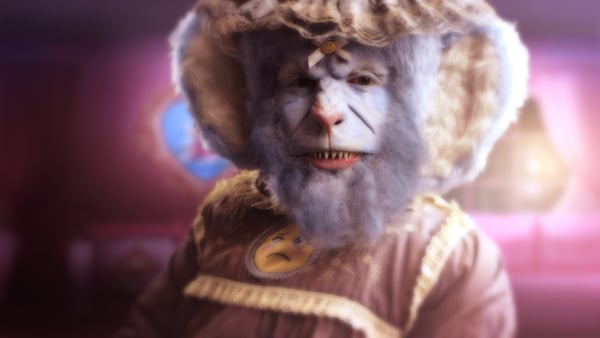
Rachel Maclean, still from Feed Me (2015).
Photo: © Rachel Maclean, 2015.
While it features no actual children, Rachel MacLean’s Feed Me (2015) created for the British Art Show is a grim meditation on the role of children in a society that, at once, fetishises youth (as a beauty ideal, as a font of biddable consumers, and as the embodiment of innocence) and condemns it (for failing to conform, for consuming the wrong way, and for rejecting the social strictures of adulthood). Played by the artist herself, the children of McLean’s world propel an economy in which adults grotesquely infantilize themselves and consume youth economically and sexually. Back in the “real” world, in an era in which art institutions court family visitors but female artists still feel overwhelmingly uncomfortable associating themselves with the un-bohemian domesticity of motherhood, the presence of children in performances and moving image works is likewise an uneasy one.